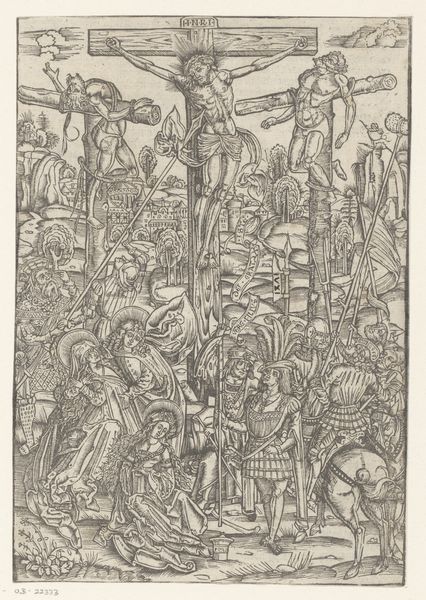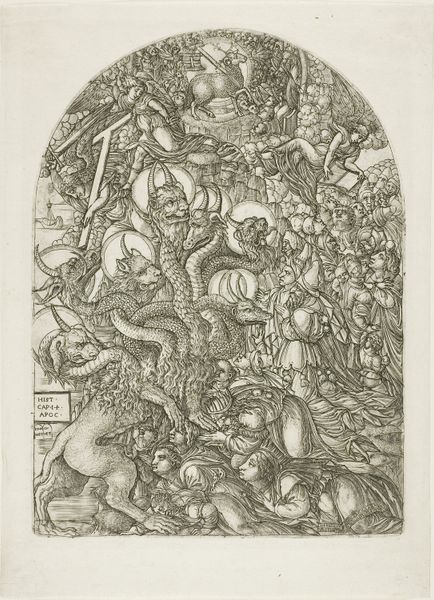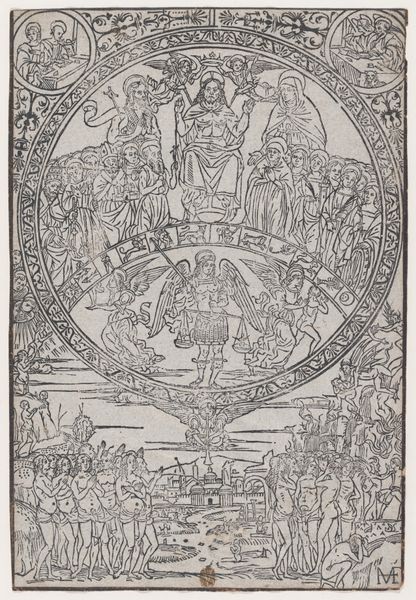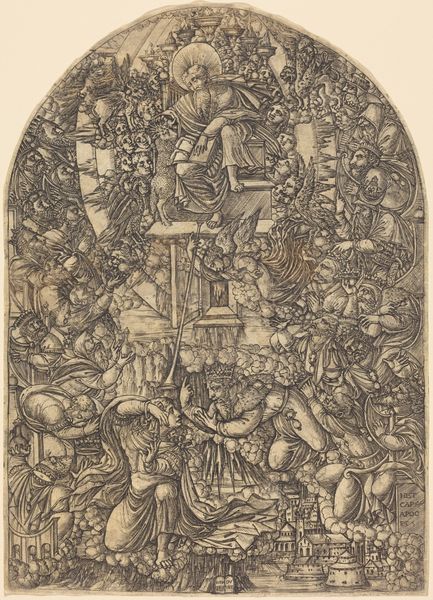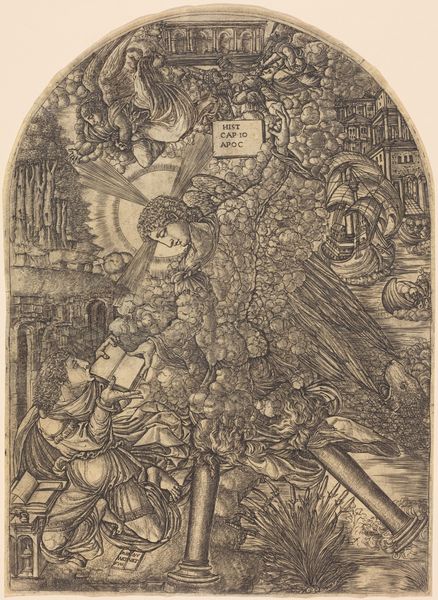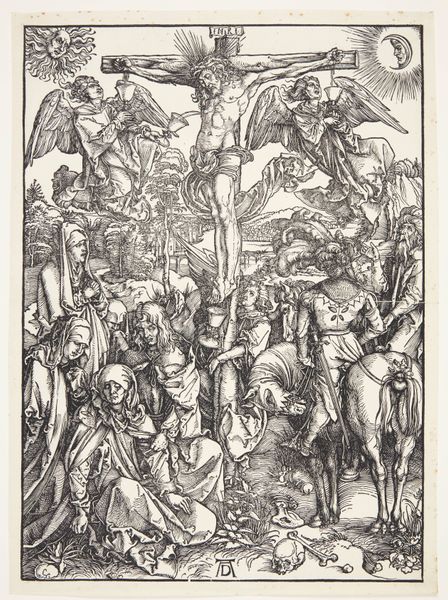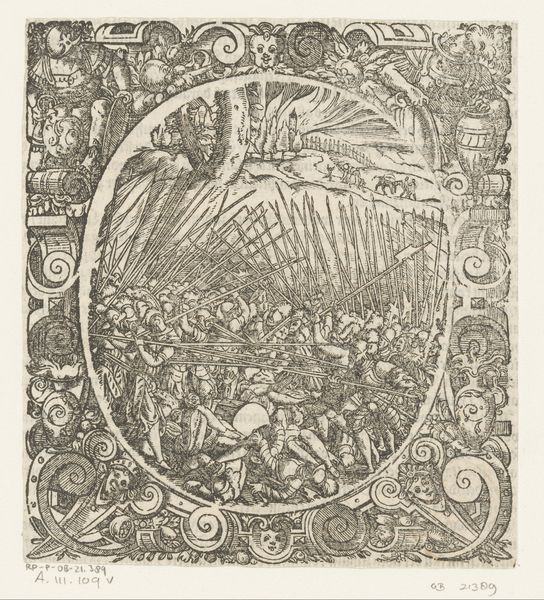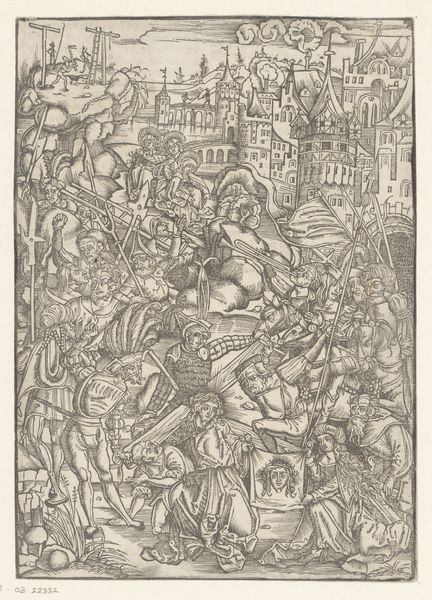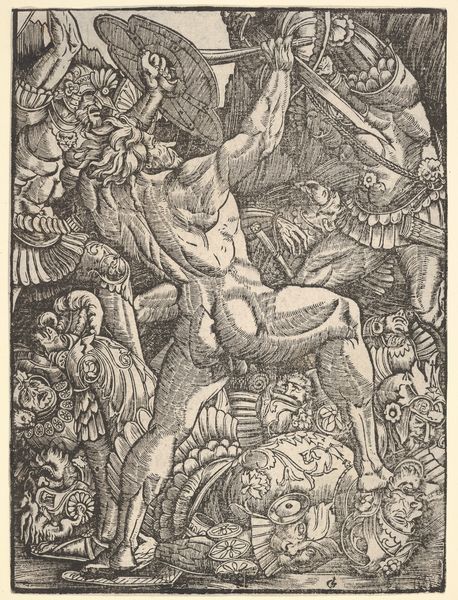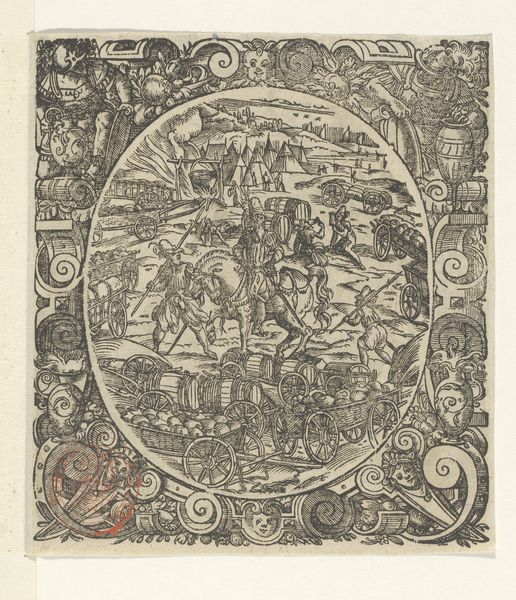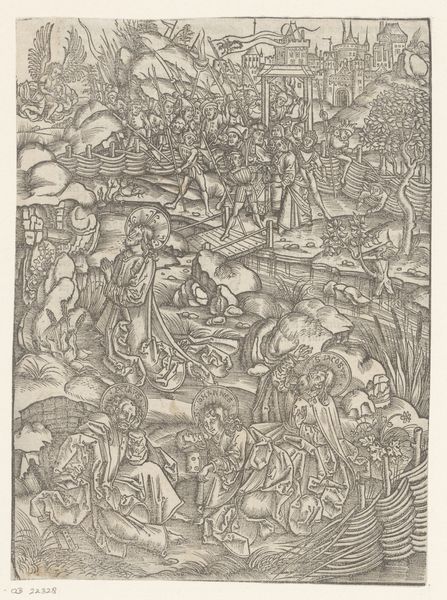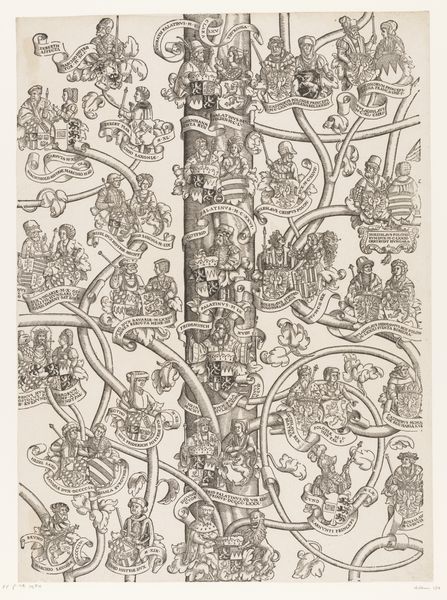
The Inferno according to Dante, after the Last Judgment fresco in the Campo Santo, Pisa 1455 - 1465
0:00
0:00
drawing, print, engraving
#
drawing
#
medieval
# print
#
figuration
#
line
#
history-painting
#
italian-renaissance
#
nude
#
engraving
Dimensions: Sheet: 11 13/16 × 8 7/16 in. (30 × 21.5 cm)
Copyright: Public Domain
This engraving, realized by an anonymous artist, depicts Dante's Inferno, drawing from the Last Judgment fresco in the Campo Santo, Pisa. The image presents a complex visualization of Hell, categorized by sins such as 'invidia', 'ghola', 'lusvria' and 'avariticia'. Made in Italy, at an unknown date, this work reflects the cultural and religious context of its time. The detailed layering and organization of sinners according to their transgressions is a visual representation of a medieval Christian worldview, where morality dictated the afterlife. The fresco in Campo Santo in Pisa was a public artwork, intended to inspire reflection, devotion, and perhaps even fear. This engraving might have served a similar purpose, bringing the moral lessons of the fresco to a broader audience. Understanding this image requires looking into Dante's 'Inferno' and the history of religious art in Italy. Further research into the social and religious environment that produced both the fresco and this engraving will provide a more complete picture of their cultural significance.
Comments
No comments
Be the first to comment and join the conversation on the ultimate creative platform.

